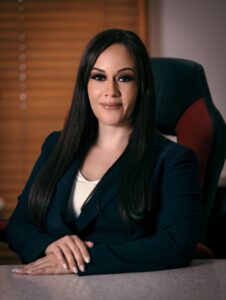I. Introduction:
Mech Tech Institute’s (MTI) Copyright Policy defines what is the author’s right, to what it is applied, to whom the rights belong to, and what we must do to respect them.
The author’s rights are federal and local statutes, and its compliance is of vital importance for MTI. The violations to these laws may lead to civil lawsuits and/or criminal penalties.
The purpose of the Copyright Policy is to offer an orientation of what is the author’s right and clarify doubts that our educational community may have regarding this topic, the reproduction of material that is protected by the Law of Author’s Rights (Copyright), and look after its compliance.
The copy or illicit transmission of literary, scientific, and artistic works; music, movies, informational programs, data bases; among other people’s work, are not a legitimate academic utilization but the stealing of an author’s rights and other intellectual property rights, something that Mech-Tech Institute does not promote or accept.
II. Definition of Copyright:
An author’s right, also known as Copyright, is an exclusive right granted by the Federal government to the creators of original works as a means of protecting them from third parties, and who has an established time frame. This allows the author to perform his/her rights with the exclusion of third parties and receive compensation for his/her work. This law is known as the Copyright Act of 1976, as amended, 17 U.S.C. §101-et seq. and establishes that an original author’s work is that created in a tangible and known expression environment or that is invented in the future and of which the work can be perceived, reproduced, or communicated in any other form.
Among other works that can be protected by the author’s right are: literary and artistic works (novels, poems, theater plays, reference works, and newspapers); informational programs, data bases, movies, musical compositions, choreographies; artistic works, such as: paints, drawings, photographs, sculptures, architecture and publicity, maps, and technical drawings (World Organization of Intellectual Property, 2011).
There are certain works that are not under the Law of Author’s Rights:
- ideas, titles, and facts
- procedures, methods, systems
- Federal government works
- works that are under public domain because their protection period expired.
III. Types of author’s rights:
- Patrimonial right: Makes reference to the economic exploitation that the author has exclusively of his works and creations. The owner of the author’s rights has the right to reproduce; distribute; make derivate works or adaptations of the original; represent, execute, and exhibit the work publicly. This right is current for an established time frame from the death of the last author. Afterwards, it becomes part of the public domain for any person to exploit the work.
- Moral right: It is linked to author permanently, it is exclusive of the work’s creator to protect the bond between the author and his/her work. It is for a definite period of time and determined and cannot be sold, given in, or transferred. A work created by an employee as part of his/her tasks, any other work made by order or as independent contractor, does not generate moral rights.
- Connected right: Protects other persons such as artists, interpreters, translators, editors, producers, etc.
- Reproduction right: Allows the author of a work to avoid that third parties make copies or reproduction of his/her works. A person whose interest is to use a work or part of a work of other person, must request permit from the owner to the author’s rights before using the material except in those occasions in which such use is fair as defined by the Copyright Act 1976.
- Right of public communication: The author or any other person that is entitled to the rights, can authorize a representation or live execution or in direct of his/her work (the representation of a theater play, or concert by an orchestra). When the phonograms are broadcasted by using an amplifier in a public place, such as a discotheque, an airplane or mall, they are also subjected to this right.
- Translation right: To reproduce and publish a translated work, a permit to the author must be requested and it must be in its original language.
IV. Fair use:
One of the rights of the owner of an author’s rights is the right to reproduce or authorize others to reproduce their work in copies or recordings. This right is subjected to certain limitations that are established in Sections 107 to 118 of the Copyright Law (Title 17, Legal Code of the United States). One of the limitations is the doctrine of fair use which allows reproducing in a reasonable manner part of a work without previous consent of the author, as can be a critic to a work, a comedy sketch, comments, news report, teaching, and investigation.
Section 107 of the Copyright Law establishes four (4) facts to be considered when particularly determining if the use is fair:
- the purpose and use, including if it is of commercial nature or for non-profit instructional purposes;
- the type of the work’s author’s right;
- the amount and consistency of the portion used in relation to the work’s author’s right in its whole, and
- the effect of the use over the potential market or value of the work’s author’s right.
Distinguish between “fair use” and its violation; it may be confusing. There is no number of words, lines, or specific notes that may be extracted from a work without permission, without the danger of violating the law. Mention that the reference source does not substitute the obligation to have authorization for its use. For this reason, careful judgment must be exercised when using works that are protected by an author’s right. The Act of 1961, Report of the Register of Copyrights on the General Revision of the U.S. Copyright Law, provides examples of activities that the court has considered as being of fair use: “use of passages from a review or critic with the purpose of illustration or comment; parts of short passages in a technical work or in the academic field for theillustration or clarification of the author’s observations; use in a comedy sketch of any content of the sketch; summary of an article with brief quotes in a news article; reproduction by a library of a portion of the work to replace part of a damaged copy; reproduction by an instructor or student of a small part of a work to demonstrate a class…”
The safest manner of not violating th Copyright Policy is to always obtain an authorization from the owner before using the work. If it is not possible to obtain permit, the use of a work must be avoided unless secure that the fair use doctrine applies to the specific situation.
The use of disseminated copies by an instructor in his/her classroom can be in considered, in occasions, as fair use and in other occasions, it may not.
If the copy is of a new work of which authorization from the owner of the author’s right cannot be obtained with anticipation for use in the classroom and the decision of using the work was spontaneous, the use may be considered fair use.
For example, if an instructor copies whole parts or chapters of a text without the author’s permit and hands them in to the students, he/she may be violating the Copyright Law. Schools that make unauthorized software copies to be used by their students are evidently violating the doctrine of honest use.
It is not fair use, and it is necessary to obtain a license or authorization from the owner of the author’s rights if the use of the copy in the classroom is:
- planned
- repeated from course to course
- includes works that have been in circulation and of which it is expected to obtain a license and/or permit with enough time.
The same copyright and intellectual law applies to digital works.
WARNING REGARDING THE COMPLIANCE WITH THE LAW AND REGULATION THAT PROTECTS THE AUTHOR’S RIGHTS:
The unauthorized distribution or reproduction, by any means, of material protected by the laws and the regulation of the copyright may lead to the imposition of civil and criminal penalties. Mech-Tech Institute established dispositions of the academic honesty that contemplates the protection of this type of material and its violation may lead to the imposition of disciplinary sanctions, as established in the Student Handbook.



